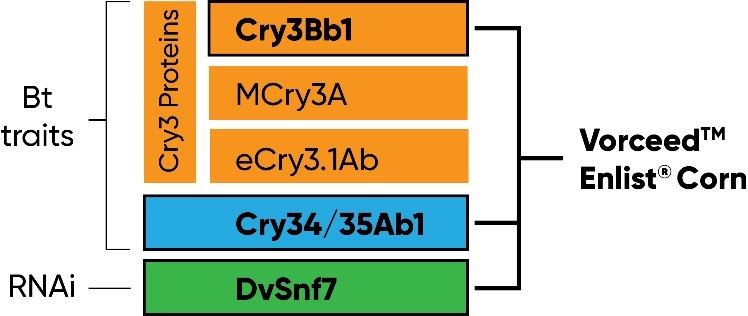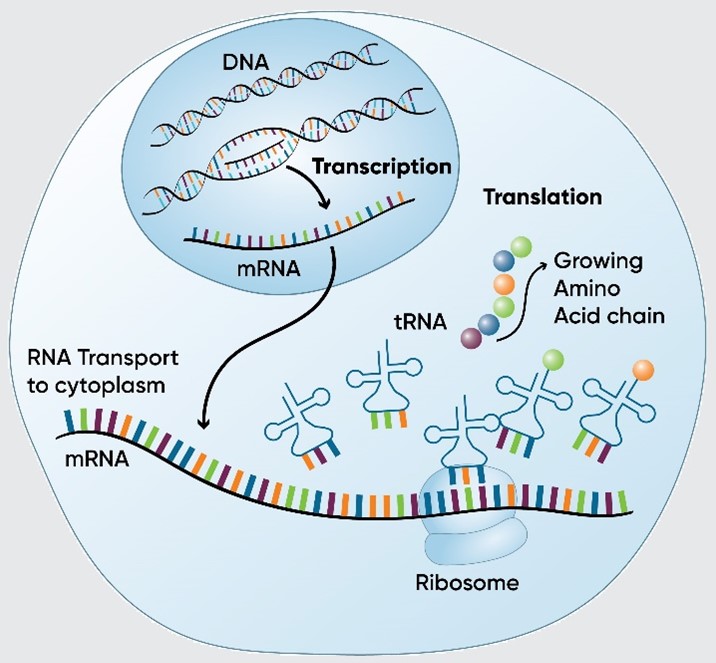Baum, J.A., T. Bogaert, W. Clinton, G.R. Heck, P. Feldmann, O. Ilagan, S. Johnson, G. Plaetinck, T. Munyikwa, M. Pleau, et al. 2007. Control of coleopteran insect pests through RNA interference. Nat. Biotechnol. 25:1322-1326.
Darlington, M., J.D. Reinders, A. Sethi, A.L. Lu, P. Ramaseshadri, J.R. Fischer, C.J. Boeckman, J.S. Petrick, J.M. Roper, K.E. Narva, et al. 2022. RNAi for Western Corn Rootworm Management: Lessons Learned, Challenges, and Future Directions. Insects 13:57.
Fire, A., S. Xu, M.K. Montgomery, S.A. Kostas, S.E. Driver, and C.C. Mello. 1998. Potent and specific genetic interference by double-stranded RNA in Caenorhabditis elegans. Nature 391, 806–811.
Gassmann, A.J., J.L. Petzold-Maxwell, R.S. Keweshan, and M.W. Dunbar. 2011. Field-evolved resistance to Bt maize by western corn rootworm. PLOS ONE 6(7): e22629.
Gassmann, A.J., J.L. Petzold-Maxwell, E.H. Clifton, M.W. Dunbar, A.M. Hoffmann, D.A. Ingber, and R.S. Keweshan. 2014. Field-evolved resistance by western corn rootworm to multiple Bacillus thuringiensis toxins in transgenic maize. Proc. Nat. Acad. Sci. 111 (14) 5141-5146.
Gassmann A.J., R.B. Shrestha, S.R.K. Jakka, M.W. Dunbar, E.H. Clifton, A.R. Paolino, D.A. Ingber, B.W. French, K.E. Masloski, J.W. Dounda, and C.R. St. Clair. 2016. Evidence of resistance to Cry34/35Ab1 corn by western corn rootworm (Coleoptera: Chrysomelidae): root injury in the field and larval survival in plant-based bioassays. J Econ Entomol 109: 1872– 1880 (2016).
Head, G.P., M.W. Carroll, S.P. Evans, D.M. Rule, A.R. Willse, T.L. Clark, N.P. Storer, R.D. Flannagan, L.W. Samuel, and L..J. Meinke. 2017. Evaluation of SmartStax and SmartStaxPRO maize against western corn rootworm and northern corn rootworm: Efficacy and resistance management. Pest Manag. Sci. 73:1883-1899.
Jakka, S.R.K., R.B. Shrestha, and A.J. Gassmann. 2016. Broad-spectrum resistance to Bacillus thuringiensis toxins by western corn rootworm (Diabrotica virgifera virgifera) Sci Rep 6, 27860.
Zukoff, S.N., K.R. Ostlie, B. Potter, L.N. Meihls, A.L. Zukoff, L. French. M.R. Ellersieck, B.W. French, and B.E. Hibbard. 2016. Multiple assays indicate varying levels of cross resistance in Cry3Bb1-selected field populations of the western corn rootworm to mCry3A, eCry3.1Ab, and Cry34/35Ab1. J Econ Entomol 109: 1387-1398.
Liberty®, LibertyLink® and the Water Droplet Design are registered trademarks of BASF. Agrisure® is a registered trademark of, and used under license from, a Syngenta Group Company.
The foregoing is provided for informational use only. Please contact your Pioneer sales professional for information and suggestions specific to your operation. Product performance is variable and depends on many factors such as moisture and heat stress, soil type, management practices and environmental stress as well as disease and pest pressures. Individual results may vary. CI230503
May 2023









